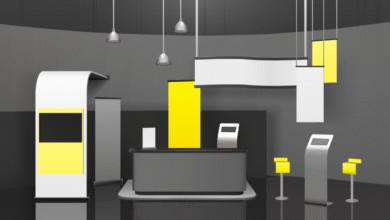Why Smart Devices Might Know More About Your Allergies Than You Do

For years, allergy season felt like a guessing game. One day, I’d wake up fine — the next, I’d be sneezing nonstop, eyes itching, and wondering what went wrong. Like most people, I blamed the weather, the pollen count, or maybe my cat. But what if the real answer was hiding in my environment all along — data I couldn’t see, but my smart devices could?
With advances in ENT (Ear, Nose, and Throat) medicine and digital health technology, managing allergies is no longer about reacting to symptoms. It’s about predicting them. From AI-powered air-quality sensors to smart inhalers and wearable trackers, technology is uncovering patterns in how our bodies respond to allergens — often before we even feel them.
The Struggle of Managing Allergies in a Tech-Driven World
Why Traditional Allergy Testing Feels Outdated
If you’ve ever gone through traditional skin-prick tests or blood panels, you know how slow and reactive the process can be. Doctors test for common allergens like pollen, dust mites, or pet dander, but results often depend on memory — “When did your symptoms start?” or “Were you outdoors that day?”
The problem is, allergies don’t work on a schedule. Triggers shift with the season, humidity, and even air pressure. Traditional testing captures a single moment in time, while your body reacts dynamically every day. That’s where smart allergy technology steps in — continuously collecting and analyzing data that traditional methods can’t.
How Modern ENT Technology Bridges the Diagnostic Gap
New tools in ENT medicine are changing how specialists diagnose and monitor allergy-related issues like sinusitis, rhinitis, and asthma. Smart devices can now monitor air particles, humidity, and temperature in real time. When paired with AI-based analytics, they identify correlations between your environment and your symptoms.
Imagine your phone alerting you that pollen levels will spike in your area tomorrow — or your wearable device suggesting a preemptive antihistamine dose. That’s not science fiction anymore; it’s how digital allergy tracking works today.
The Hidden Problems Behind ENT and Allergy Misdiagnosis
Limited Testing Methods and Patient Recall Bias
Even the best doctors rely on accurate patient feedback. But let’s be honest — how often do we remember exactly when we started sneezing or coughing? That recall bias can lead to misdiagnosis or delayed treatment.
In ENT care, where multiple conditions mimic one another, such as chronic sinusitis vs. seasonal allergies, missing small patterns can have big consequences. A patient might spend months treating symptoms without addressing the root cause — environmental exposure.
How AI-Based Diagnostic Tools Improve Accuracy and Speed
AI algorithms trained on allergy data are now assisting ENT specialists in identifying patterns that humans might miss. Platforms using machine learning can analyze thousands of environmental variables — pollen count, air pollutants, humidity, and even indoor air quality — to predict flare-ups.
This technology helps doctors personalize treatment plans, recommend lifestyle adjustments, and track progress remotely. Artificial Intelligence (AI) doesn’t replace the physician; it enhances their ability to make data-driven decisions.
Using Smart Devices to Track Allergies and Breathing Health
The Role of Wearable Air-Quality Sensors and Smart Inhalers
Smartwatches, wearable air monitors, and smart inhalers are reshaping allergy management. Devices like AirVisual, Awair, or Fitbit’s SpO₂ trackers collect data on air quality, oxygen saturation, and environmental pollutants.
Smart inhalers, on the other hand, sync with mobile apps to record each use. This helps patients and ENT doctors see how often medication is needed and under what conditions — whether during high pollen days, after cleaning, or while exercising outdoors.
How Continuous Data Helps Detect Allergy Triggers Early
The power of these devices lies in their consistency. Continuous monitoring builds a digital map of your environment and health responses. When your smartwatch notices a change in breathing rate or oxygen levels, it can flag early signs of an allergic reaction.
Over time, this information reveals patterns — maybe your symptoms worsen when humidity rises above 70%, or when indoor CO₂ levels climb. Armed with this insight, both you and your doctor can make informed adjustments to minimize exposure and improve treatment outcomes.
The Future of Personalized ENT Treatments
How Data Analytics Customize Immunotherapy and Medications
No two allergy sufferers are the same — and technology is helping doctors tailor treatments accordingly. Through data analytics, ENT specialists can evaluate how patients respond to immunotherapy (allergy shots) or oral medications over time.
For example, if smart data shows your symptoms peak two hours after exposure, your dosage or schedule can be adjusted accordingly. Predictive algorithms also help forecast flare-ups, letting doctors fine-tune preventive care rather than waiting for symptoms to worsen.
3D Imaging and Machine Learning in Sinus Surgery Planning
Beyond allergies, technology is improving ENT surgeries too. Using 3D imaging, CT scans, and machine learning, surgeons can now create precise anatomical models of the nasal cavity and sinuses.
This helps them plan minimally invasive procedures for conditions like chronic sinusitis or nasal polyps, reducing recovery time and improving long-term outcomes. In many ways, technology is doing for ENT surgery what robotics did for orthopedics — making it more accurate, efficient, and patient-friendly.
From Clinic Visits to Virtual Consultations
How Telemedicine Makes Allergy Care More Accessible
Before the pandemic, most allergy appointments required in-person visits. Now, telemedicine allows patients to connect with ENT specialists from home. Through video consultations, doctors can review symptom logs from smart apps, analyze trends, and adjust prescriptions without needing physical exams every time.
This shift saves time and provides continuity of care, especially for those managing chronic allergies or respiratory issues.
The Benefits of Remote Monitoring for Chronic ENT Patients
For people with persistent conditions like asthma or rhinitis, remote monitoring is a game-changer. Sensors and mobile health apps can send updates directly to their doctor’s dashboard, helping detect early warning signs.
If breathing patterns change or medication use increases, the ENT team can respond quickly — often preventing emergency visits. This blend of real-time monitoring and professional oversight is the heart of connected healthcare.
The Real-World Impact of Technology on Allergy Relief
Faster Diagnosis, Safer Treatments, and Fewer Flare-Ups
The biggest advantage of integrating tech into ENT allergy care is speed and accuracy. Instead of waiting weeks for appointments and lab results, patients get real-time insights into their triggers.
Smart devices and data-driven diagnostics not only make treatments more effective but also reduce unnecessary medication use. By knowing exactly what causes your symptoms, you can focus on prevention rather than constant reaction.
Why Digital Health Is Redefining Patient Experience
Technology is shifting the focus of ENT and allergy care from “one-size-fits-all” to personalized wellness. Patients are no longer passive recipients of treatment; they’re active participants.
When your watch, air monitor, and phone all work together to track your health, you’re not just managing allergies — you’re mastering them. And that empowerment changes everything.
Conclusion: Listening to What Your Tech Is Telling You
A few years ago, tracking allergies meant keeping a handwritten diary or guessing based on the weather report. Today, smart technology quietly observes everything — air particles, sleep quality, even subtle changes in your breathing.
These digital insights can tell you more about your body than you realize. When combined with professional ENT care, they make allergy management smarter, faster, and more precise than ever before.
So the next time your smartwatch buzzes with an air-quality alert or your app logs a pattern you didn’t notice, take it seriously. Your tech might just know your allergies better than you do — and that’s not a bad thing.



